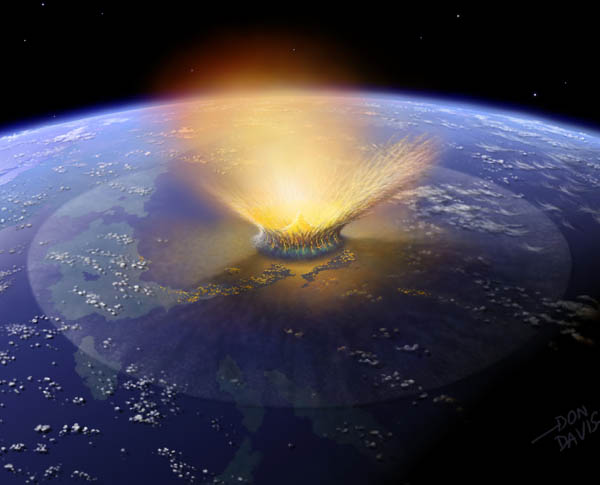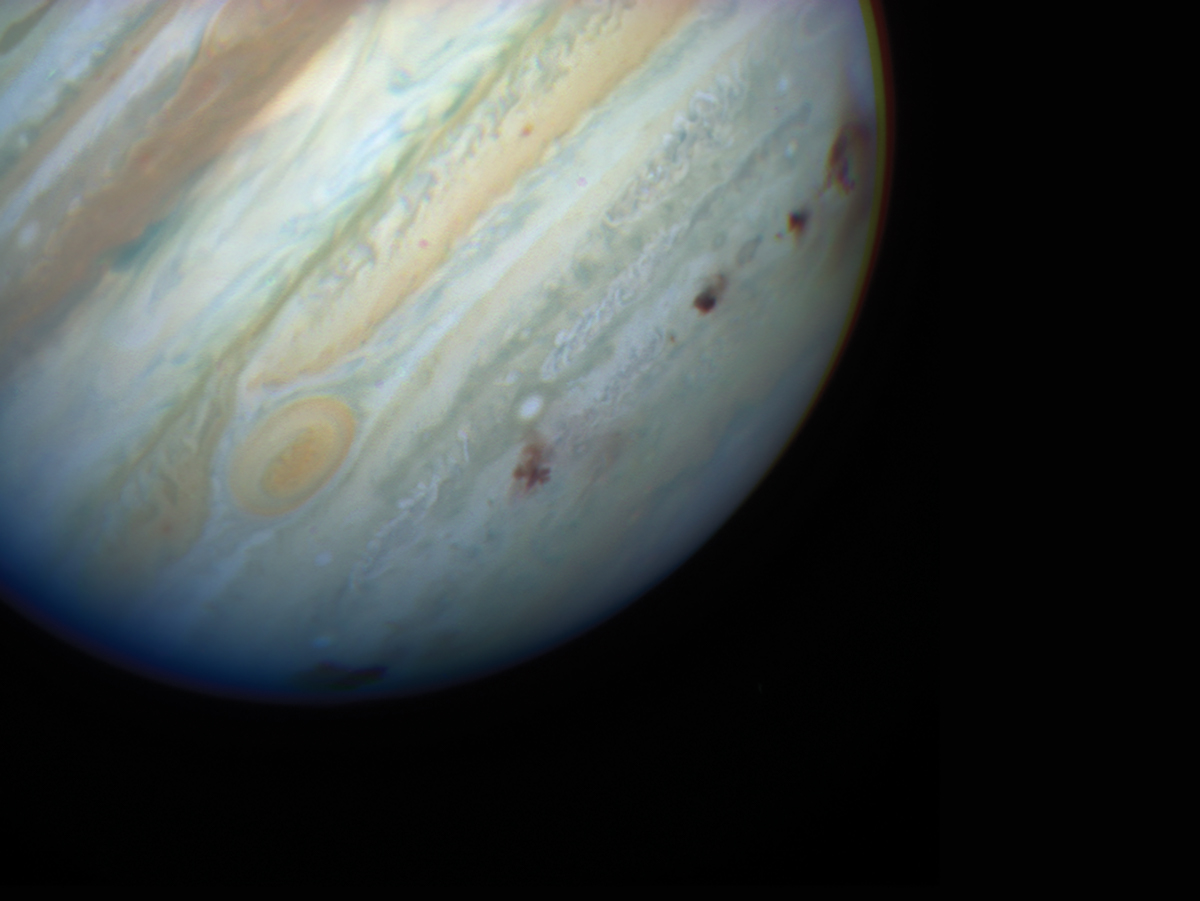The asteroid that wiped out the dinosaurs 66 million years ago might not have arrived alone.

Don Davis
The asteroid that wiped out the dinosaurs 66 million years ago might not have been alone. In the August 17th Science Advances, scientists report the discovery of what appears to be the scar of a smaller impact that occurred at roughly the same time.
Evidence suggests an extraterrestrial intruder caused the big extinction event at the boundary between the Cretaceous and the Paleogene geological periods (see Sky & Telescope’s October 2021 issue). In particular, the cosmic catastrophe left Chicxulub impact crater, 180 kilometers (110 miles) wide, under the current coastline of the Yucatán peninsula in Mexico. The impactor itself was some 12 kilometers wide.
A team led by Uisdean Nicholson (Heriot-Watt University, Edinburgh) now says that a smaller crater in the eastern Atlantic Ocean has approximately the same age as Chicxulub, suggesting that the two impacts may have been related.
The Nadir crater (named after a nearby seamount) is about 9 kilometers across and lies some 350 kilometers out of the coast of the African countries Guinea and Guinea Bissau. It’s buried beneath a few hundred meters of sediment, but the characteristic circular structure, raised rim, and central peak show up in seismic measurements.
From the location of the crater with respect to the various geological layers, the authors conclude that it is 66 million years old, although there’s an uncertainty of at least 500,000 years in the age estimate.
Computer modeling by team member Veronica Bray (Lunar and Planetary Laboratory, Tucson) suggests that Nadir Crater could have been formed by a 400-meter-wide asteroid, causing widespread regional devastation, as well as a 900-meter-high tsunami traveling around the globe. (Incidentally, 400 meters is comparable to the diameter of asteroid Bennu, which has a tiny but real chance of impacting Earth 160 years from now.)
So might there be a connection with the Chicxulub impact? Nicholson and his colleagues think so. Maybe the impactor was a binary asteroid. After all, we know that many asteroids are accompanied by small moonlets, and there are confirmed cases of dual impacts, like the 470-million-year-old Lockne and Målingen craters in Sweden.
Another possibility is that the original asteroid (or comet) broke up into one large and several small pieces as a result of tidal forces during an earlier close encounter with Earth, just like Jupiter’s tidal forces tore apart Comet Shoemaker-Levy 9 before the resulting fragments smashed into the planet’s atmosphere in 1994.

Hubble Space Telescope Comet Team / NASA
Finally, the team speculates about an “impact cluster,” similar to the one that appears to have occurred during the Ordovician, when the collisional break-up of a main-belt asteroid resulted in a period of a few million years with a higher-than-average rate of meteorite impacts. Interestingly, an impact in Ukraine, the 24-kilometer-wide Boltysh Crater, has an estimated age of 65.4 million years and could have been formed as part of the same impact cluster.
Other scientists remain skeptical at this point. “It’s a nice observation,” says geologist Jan Smit (Free University, Amsterdam), who studied the Chicxulub event in detail, “but in my view, it’s pure speculation. The association with Chicxulub has an uncertainty window of about a million years, so it’s not very convincing yet.”
Smit also doubts that a 400-meter-wide space rock plunging into an 800-meter-deep ocean is able to carve out a neat impact crater. Maybe Nadir Crater is a collapsed volcanic structure after all.
Nicholson and his colleagues acknowledge that more work needs to be done. “As with confirmation of the hypervelocity origin of the Nadir structure,” they write, “the precise age of the crater and its association with the Chicxulub impact event […] can only be tested by high-precision dating of samples obtained from Nadir by scientific ocean drilling.”
 1
1









Comments
Martian-Bachelor
August 25, 2022 at 12:00 am
Science in Action, on the BBC World Radio Service, recently did an interview with Uisdean Nicholson and University of Texas geologist Sean Gulick on this: https://www.bbc.co.uk/sounds/play/w3ct369d
You'll likely want to skip something like 12-13 minutes in past the first of the three stories they tend to cover in an episode.
You must be logged in to post a comment.
You must be logged in to post a comment.